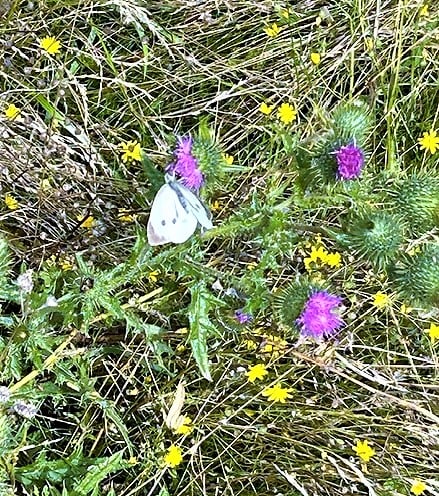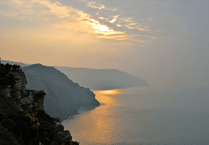IT seems hard to believe that a tiny insect such as a butterfly or moth can travel hundreds or even thousands of miles during its annual migration. Yet there are many species of butterflies and moths which regularly travel huge distances to spend the summer months on Exmoor.
Migration is defined as the directional movement of individuals of certain species as part of a seasonal pattern. We are all familiar with the migrations of birds such as swallows and swifts but the realisation that butterflies and moths can also migrate is relatively recent.
The Monarch butterflies of America, which travel thousands of miles, were the first species to be recognised as undergoing a regular mass migration, but many of our familiar butterflies and moths are joined by others of the same species which come to the UK every year from near and far.
These movements are thought to be a response to unfavourable conditions such as a shortage of food plants for the caterpillars.
In some years, many of the migrants may have been encouraged by the direction and strength of the wind. These migrants are usually strong fliers and it is thought that they navigate by using landscape features and the position of the sun.
Recent research and improvements in the sensitivity of radar have greatly improved our knowledge of these movements.
Butterflies regularly migrating here from Europe include many of our common native species, so boosting their numbers during the summer. These include the Whites, large and small, and the Red Admirals, which may hibernate and breed successfully here.
There are also some rare migrant species which you may be lucky enough to see, though they are unlikely to breed here.
These include Monarch, Swallowtail (only native in Norfolk), Long-tailed Blue, Camberwell Beauty, Queen of Spain Fritillary, Bath White and some sub-species of Clouded Yellow.
A few of each of these species are seen in the south and east of the UK most years. Our first record of a Long-tailed Blue on Exmoor was in October 2020 - resting on my garage door!
There are two particular species which are regular migrants and come in varying numbers every year - the Clouded Yellow and the Painted Lady.
They can breed here but are unlikely to survive the winter. Much research has been done on the Painted Lady, as it has a fascinating life cycle.
This species may migrate 9000 miles, from tropical Africa to the Arctic Circle. The whole journey is not done by individual butterflies but by a succession of up to six generations.
The northward journey starts in March and the return to the south takes place from July to October. Each new generation can take advantage of the food plants available at each stopover and any favourable winds.
When conditions are right, these two species may visit us in large numbers, especially the Painted Lady. Sometimes, as happened in 2013, many thousand visitors may be recorded. The distinctive yellow-orange Clouded Yellow butterfly is usually seen singly, though, so relatively fewer are seen each year.
As for moths, the ones that migrate are usually the larger species such as the Hawkmoths, but many of these are night flyers and are rarely seen. The Humming-bird Hawkmoth is an exception.
It can frequently be seen during the day, using its distinctive flying method - similar to Hummingbirds - hovering above flowers to nectar on them, using its long proboscis.
Other migrant moths include the Silvery moth, and the spectacular Jersey Tiger moth. At rest this moth makes a triangular shield shape, dark with pale stripes, but when it flies, its bright red underwings flash out.
There are still many mysteries surrounding the migration of butterflies and moths. It is generally thought that climate change may lead to many more rare migrants coming to the UK as our climatic conditions become more favourable for them.





Comments
This article has no comments yet. Be the first to leave a comment.